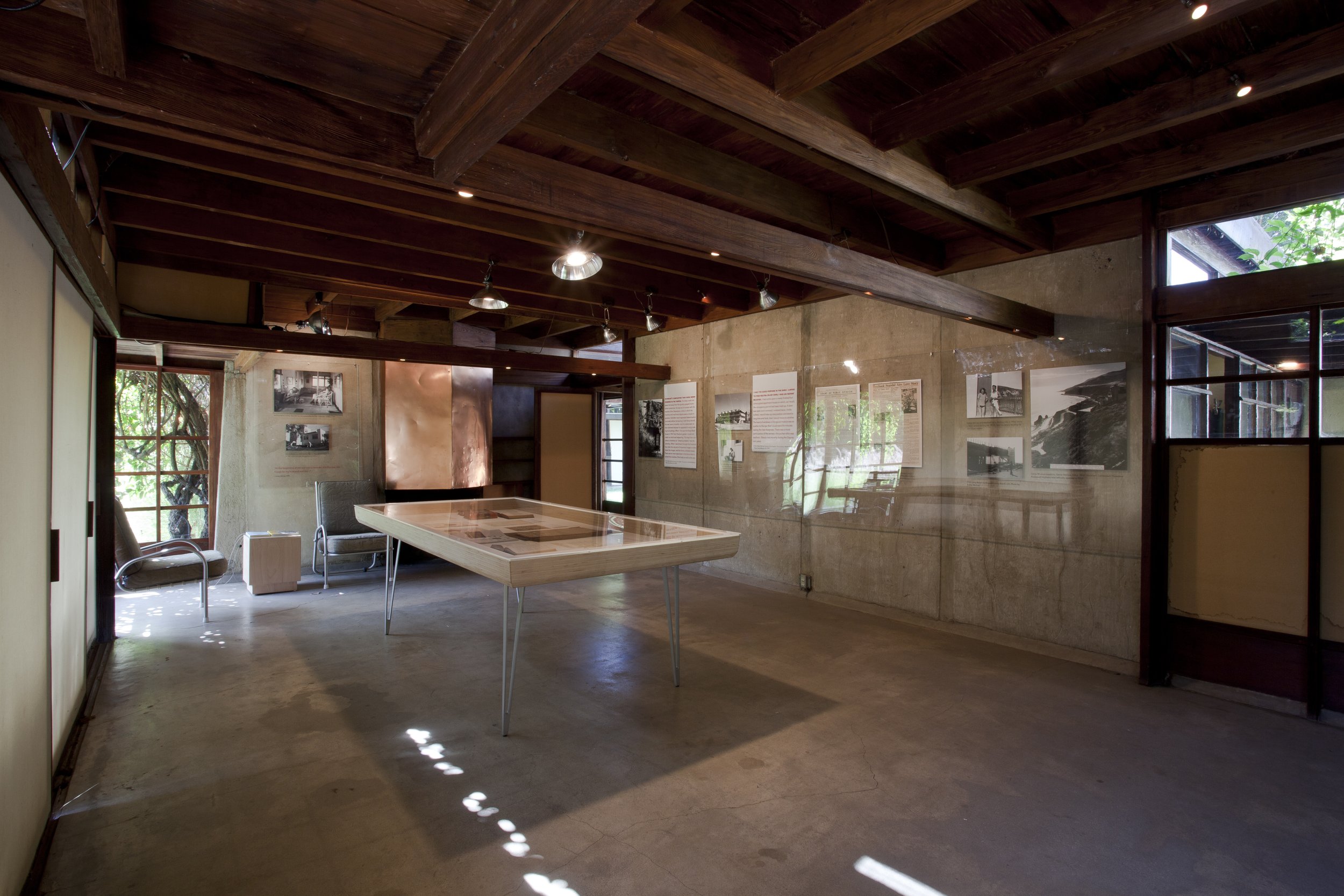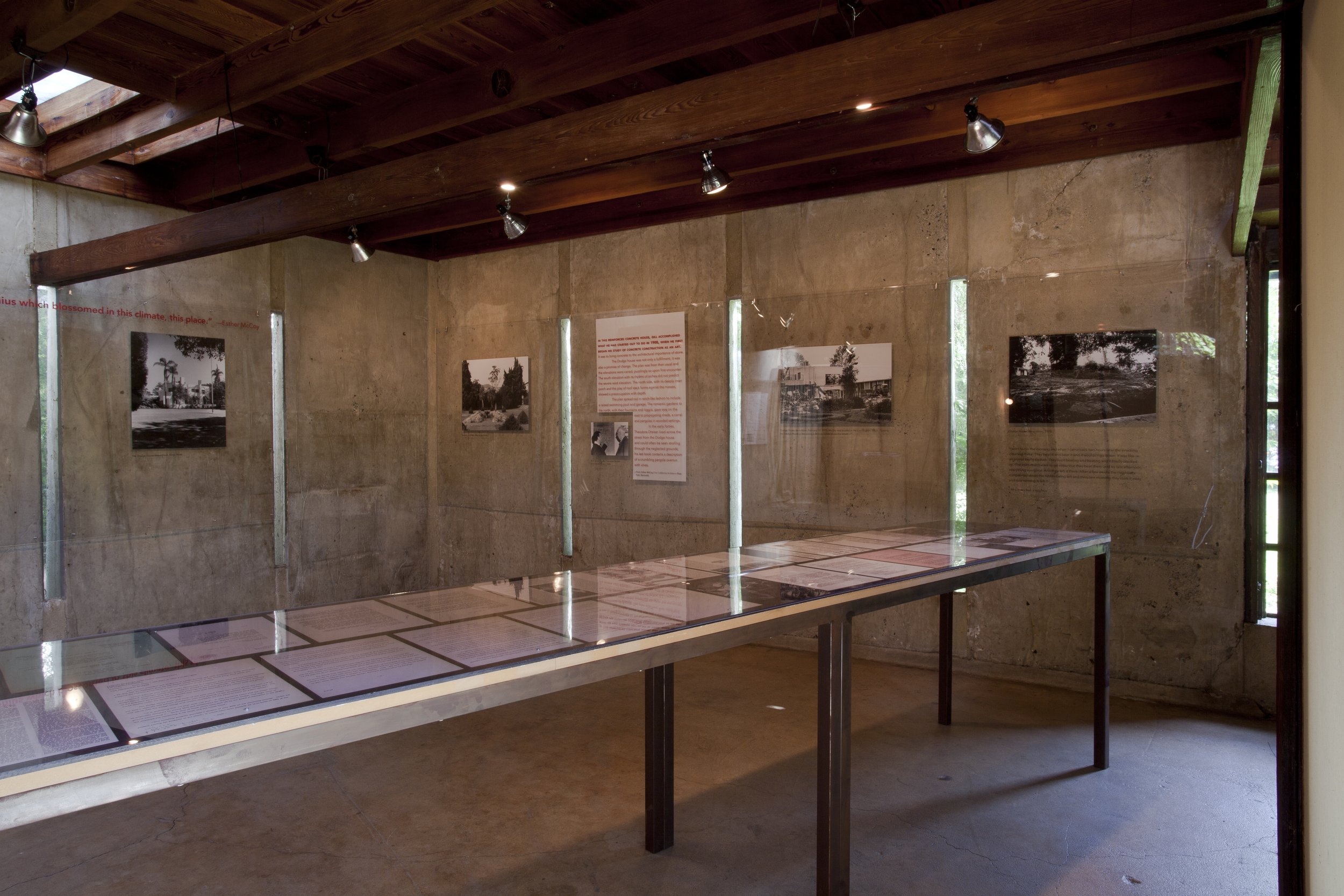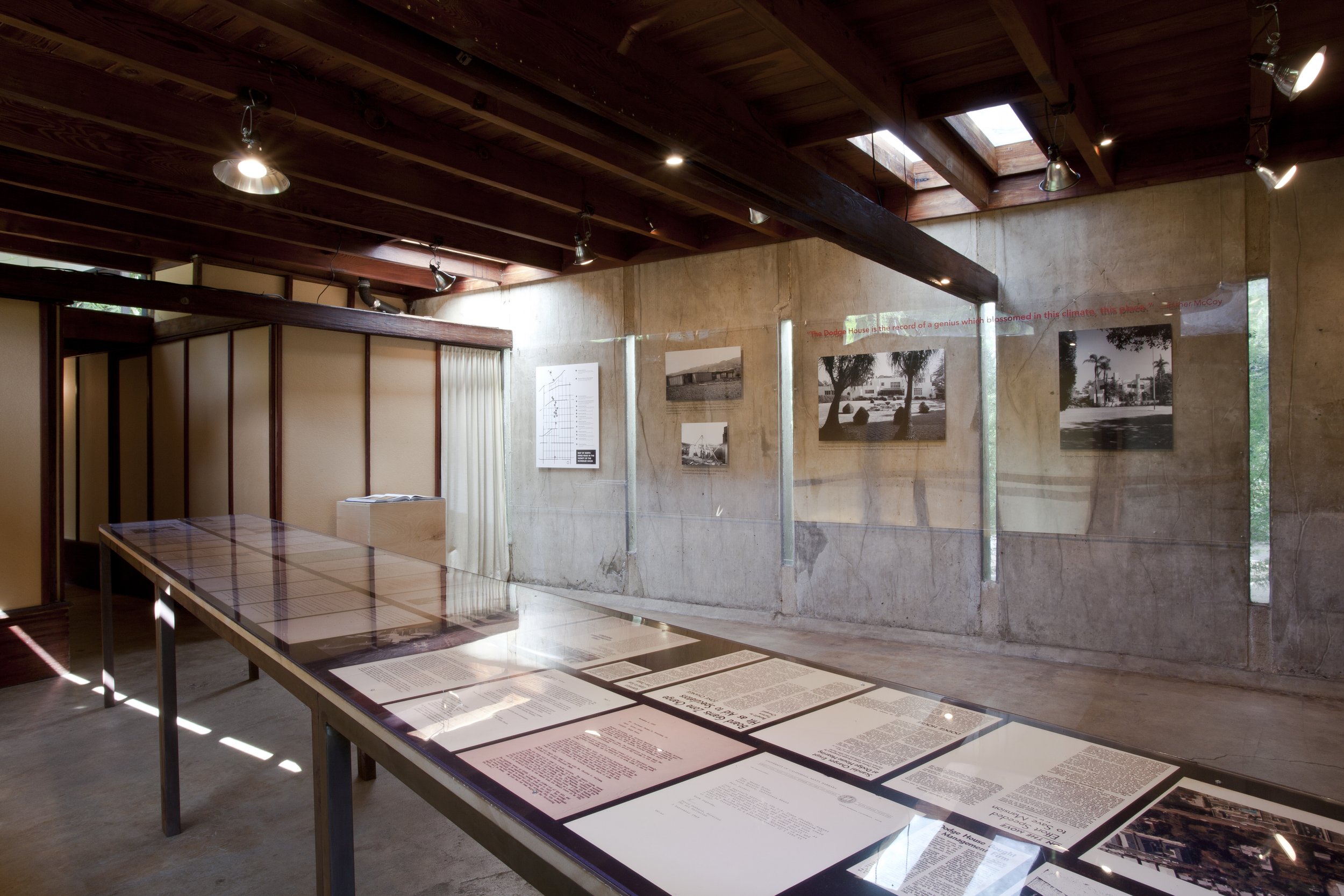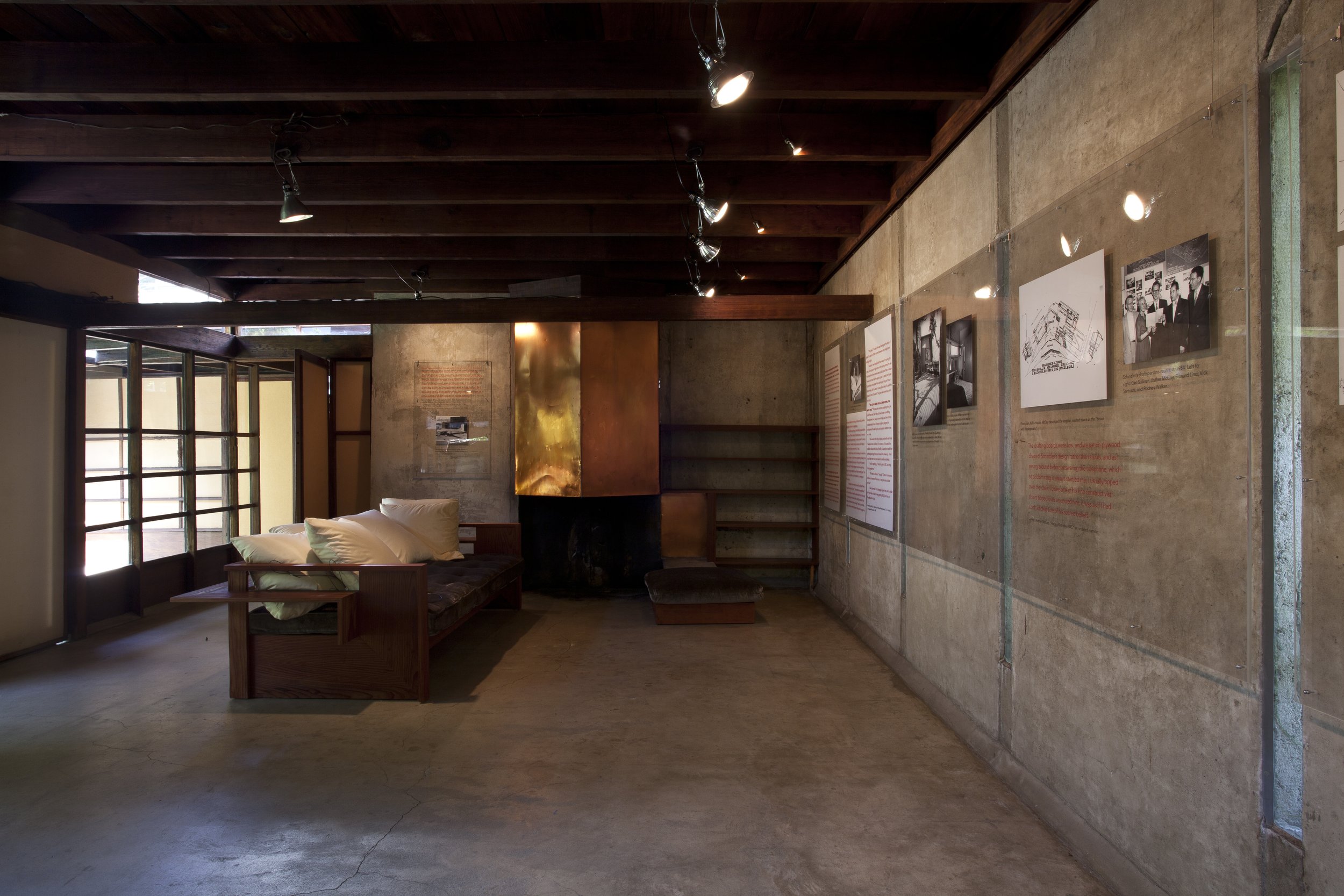Installation view of Sympathetic Seeing: Esther McCoy and the Heart of American Modernist Architecture and Design. Photography by Joshua White, 2011.
This exhibition was the first to focus on the formidable range of architectural historian Esther McCoy’s practice, and affirm her unassailable role as a key figure in American modernism. Co-curators writer Susan Morgan and MAK Center director Kimberli Meyer worked closely with the Esther McCoy Papers–an invaluable primary source comprised of thousands of documents and photographs–housed at the Smithsonian Institution’s Archives of American Art, as well as local archives. Through photographs, drawings, texts, videos, and audio interviews, Sympathetic Seeing highlighted the extraordinary range and importance of McCoy’s work.
The exhibition covered McCoy’s activist journalism focusing on fair labor practices and Los Angeles slum clearances in the 1930s; her work with Schindler first as a draftsperson and later a critic and historian of his work; the Arts & Architecture magazine years and the rise of innovative domestic architecture; her campaign to save Irving Gill’s 1916 Dodge House; and her always incisive stories that deliver an irresistibly compelling, first-hand view of American modernism.
Sympathetic Seeing was part of the Getty Foundation’s Pacific Standard Time.
This exhibition was made possible through generous assistance from the National Endowment for the Arts, the Graham Foundation for Advanced Studies in the Fine Arts, the Getty Foundation, the Los Angeles County Arts Commission, the City of West Hollywood, the Good Works Foundation, and Margaret Morgan and Wesley Phoa.






